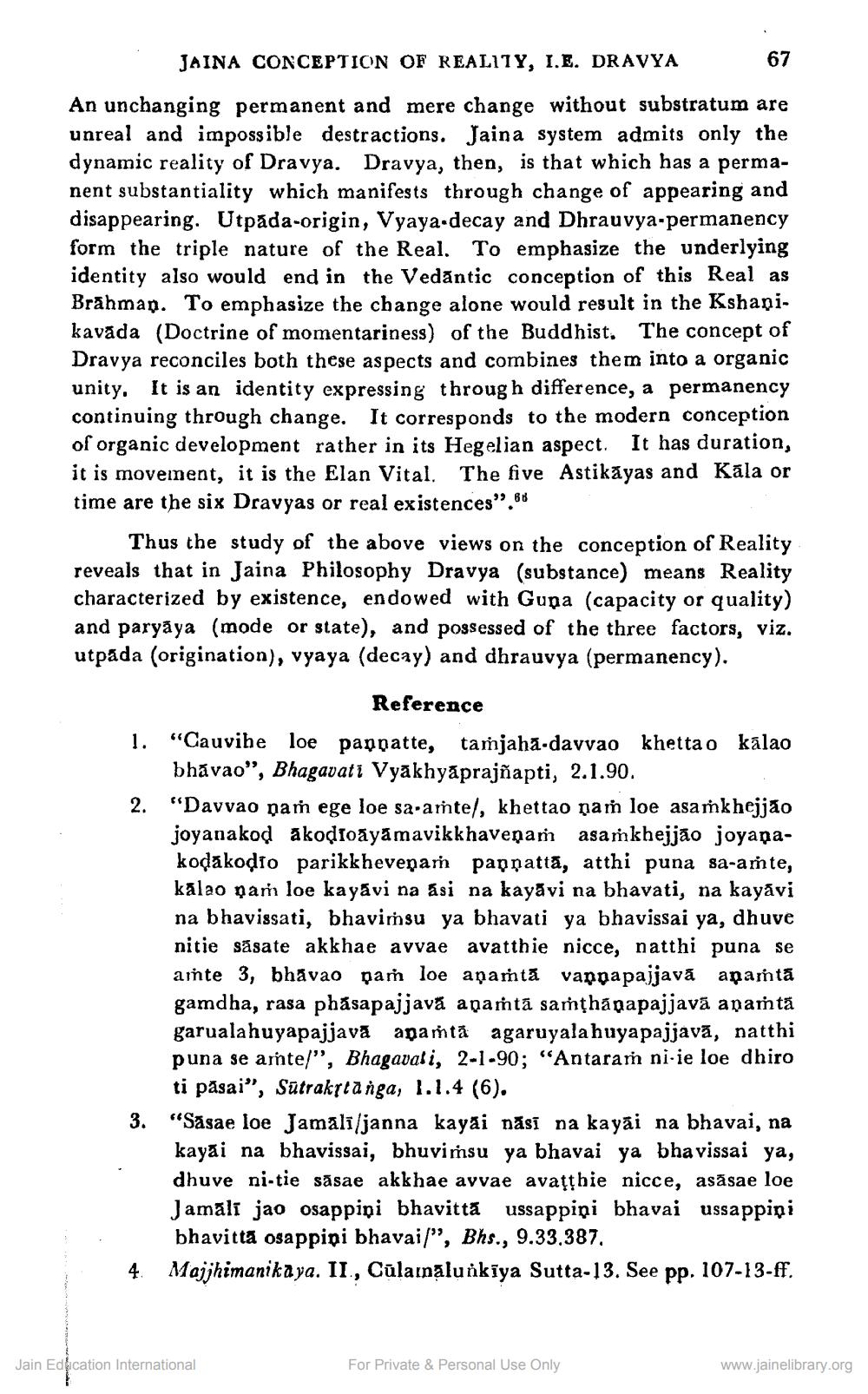________________
JAINA CONCEPTION OF REALITY, I.E. DRAVYA
67
An unchanging permanent and mere change without substratum are unreal and impossible destractions. Jaina system admits only the dynamic reality of Dravya. Dravya, then, is that which has a permanent substantiality which manifests through change of appearing and disappearing. Utpada-origin, Vyaya-decay and Dhrauvya-permanency form the triple nature of the Real. To emphasize the underlying identity also would end in the Vedāntic conception of this Real as Brahman. To emphasize the change alone would result in the Kshanikavada (Doctrine of momentariness) of the Buddhist. The concept of Dravya reconciles both these aspects and combines them into a organic unity. It is an identity expressing through difference, a permanency continuing through change. It corresponds to the modern conception of organic development rather in its Hegelian aspect. It has duration, it is movement, it is the Elan Vital. The five Astikāyas and Kāla or time are the six Dravyas or real existences”. 60
Thus the study of the above views on the conception of Reality reveals that in Jaina Philosophy Dravya (substance) means Reality characterized by existence, endowed with Gupa (capacity or quality) and paryāya (mode or state), and possessed of the three factors, viz. utpada (origination), vyaya (decay) and dhrauvya (permanency).
Reference
1. "Cauvihe loe pappatte, tamjaha davvao khetta o kalao
bhavao", Bhagavati Vyakhyaprajñapti, 2.1.90. "Davvao paṁ ege loe sa-aṁte/, khettao na loe asaṁkhejjo joyanakod akodtoayāmavikkhave an asamkhejjão joyapakodakodio parikkhevenam pappatta, atthi puna sa-arte, kalao par loe kayavi na asi na kayāvi na bhavati, na kayavi na bhavissati, bhavirsu ya bhavati ya bhavissai ya, dhuve nitie sāsate akkhae avvae avatthie nicce, natthi puna se amte 3, bhavao paṁ loe apamtā vappapajjavă apartā gamdha, rasa phasapajjavă apamtā samthapapajjavā apamtā garualahuyapajjava apamtā agaruyala huyapajjavā, natthi puna se arte/", Bhagavali, 2-1-90; "Antaram ni.ie loe dhiro
ti päsai", Sūtrakrtanga, 1.1.4 (6). 3. “Sasae loe Jamali/janna kayai nāsī na kayai na bhavai, na
kayai na bhavissai, bhuvimsu ya bhavai ya bhavissai ya, dhuve ni-tie sāsae akkhae ayvae avațýhie nicce, asāsae loe Jamali jao osappiņi bhavitta ussappiņi bhavai ussappiņi
bhavittà osappipi bhavail", Bhs., 9.33.387. 4. Majjhimanikaya. II., Cūlainalurkīya Sutta-13. See pp. 107-13.ff.
Jain Edication International
For Private & Personal Use Only
www.jainelibrary.org




